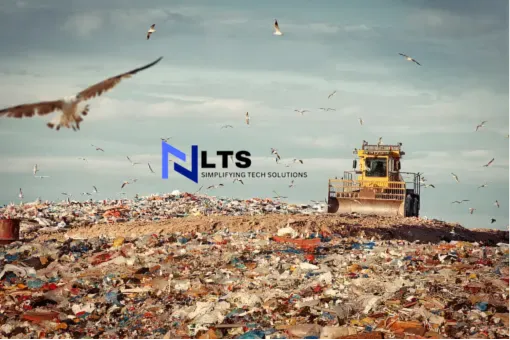High Quality Tested Apple Products For Sale

Apple MacBook Pro A1989
£74.99
£74.99

Apple MacBook Pro A1708 (FAULTY)
£159.99
£159.99

Apple MacBook Pro A1706 (FAULTY)
£140.00
£140.00

Apple MacBook Pro A2251 (2020) 13" - i5 2.0GHz, 16GB RAM, 512GB SSD
£399.99
£450.0011% off£399.99

Apple MacBook Pro A1502 2015 13" Laptop Intel i5-5257U - Silver
£150.00
£150.00

Apple MacBook Pro A1425 (FAULTY)
£145.00
£145.00
Sell Your Old Apple Equipment Here
NLTS offer Assets recovery across all Apple products, offering the best prices on the market due to our global trading team with over 20 years experience
Shop By Categories
Discover the perfect promotional items to elevate your brand and leave a lasting impression with our Shop by Category section. Whether you're looking for branded apparel, tech gadgets, office essentials, or eco-friendly products, we have everything you need to make a statement in your marketing campaigns.
See Our Latest Blogs
Stay up-to-date with our latest insights, tips, and trends by diving into our newest blogs. Whether you're seeking industry expertise, marketing strategies, or product inspiration, our blog section is your go-to resource for valuable content.

Environmental Impact of E-Waste: A Deep Dive
Electronic waste is one of the quickest-growing waste streams in the modern world, driven by rapid technological advancements and the desire for the latest electronic gadgets, which has resulted in a surge of e-waste. As the amount of electronic waste increases exponentially, the improper disposal of it poses adverse environmental challenges. Comprehending the impact of e-waste environmentally, helps to develop effective e-waste management strategies and sustainability. With incorrect management, toxic substances such as lead, mercury and cadmium can contaminate soil, water and air and cause adverse reactions to the environment. These reactions can have severe implications for human health and threatens ecosystems and wildlife. This deep dive demonstrates the multifaceted environmental consequences of electronic waste and the significance of successful e-waste management and the necessity for comprehensive solutions to mitigate its harmful effects.

1. Toxic Substance Release
Heavy Metals and Toxic Chemicals:
Lead: This is found in cathode ray tubes and batteries, lead causes damage to the nervous system, kidneys, and blood.
Mercury: This is used in LCD screens and fluorescent lamps; mercury is highly toxic. Exposure to mercury can lead to brain and kidney damage.
Cadmium: Cadmium is found in rechargeable batteries and CRT monitors; this can cause lung and kidney damage and is a carcinogen.
Brominated Flame Retardants (BFRs): BFRs are utilised in electronics to reduce a risk of fire but can leak into the environment and affecting brain development of humans.
2. Soil and Water Contamination
Leaching of Hazardous Substances:
Electronic waste frequently arrives in landfills where hazardous substances can penetrate the soil and groundwater. This contamination can persist long-term, posing environmental and health risks.
Impact on Agriculture and Drinking Water:
Contaminated soil can negatively affect agriculture resulting in crops containing toxic substances. Pollution can infect drinking water supplies which is a health risk towards humans and animals.
3. Air Pollution
Open Burning:
Especially in developing countries, electronic waste is frequently burned in pits to retrieve valuable metals. This procedure releases detrimental substances into the air, contributing to air pollution and respiratory problems.
Emissions from Informal Recycling:
Informal recycling practices like acid baths and open burning, release toxic substances and particulate matter into the environment, gravely impacting air quality and health.
4. Greenhouse Gas Emissions
Energy-Intensive Production:
The manufacturing of new electronics is energy intensive. By recycling e-waste, it can reduce the necessity for raw extraction and processing, lowering greenhouse gas emissions.
E-Waste in Landfills:
Organic elements in e-waste, like plastics, can produce methane, a powerful greenhouse gas, when decomposing anaerobically.
5. Loss of Valuable Resources
Depletion of Non-Renewable Resources:
Electronic waste harbours materials that are valuable such as gold, silver, copper, and scarce earth elements. In absence of the proper recycling, these resources are missing, emphasising how environmentally damaging mining activities are.
Energy Savings:
Recycling from e-waste utilises energy to a smaller extent than extracting metals from ores.
6. Impact on Wildlife
Habitat Destruction:
The removal of raw materials for electronic production frequently contributes to habitat destruction which endangers wildlife. Incorrect disposal of e-waste heightens this by contaminating habitats.
Bioaccumulation:
Toxic chemicals from e-waste can penetrate the food chain through polluted water and soil. This can accumulate in the tissues of organisms, impacting the health of wildlife and biodiversity.
7. Health Impacts on Humans
Direct Exposure:
Those working in e-waste recycling divisions are frequently exposed to hazardous matter unaccompanied by sufficient protective course of actions, resulting in consequential health issues such as respiratory illnesses, skin disorders, and cancers.
Indirect Exposure:
Those residing near disposal areas are at risk of indirect exposure to toxic materials through polluted air, water, and soil, resulting in a range of health conditions.
8. Challenges in E-Waste Management
Lack of Regulation and Infrastructure:
Specifically in developing countries, there is an absence of regulatory structures and infrastructure to contain e-waste correctly, resulting in extensive environmental contamination.
Informal Recycling Sector:
The informal recycling division dominates worldwide, where e-waste is treated using hazardous and environmentally damaging methods attributed to the unavailability of official recycling facilities and regulations.

The environmental impact of e-waste is intense and multifaceted, impacting air quality, water, soil, and human health. Confronting this obstacle has a necessity for thorough e-waste management strategies, counting proper regulatory structures, the establishment of recycling infrastructures, and public awareness. Successful recycling not only alleviates the environmental harm generated by e-waste but also preserves treasured resources and decreases greenhouse gas emissions. As the global community remains struggling with increasing e-waste, prioritizing sustainability and technologies in e-waste management is necessary for preserving our planet and guaranteeing a beneficial future for us all.
Contact Us
33 Lancaster Avenue,Hadley Wood,Barnet,Hertfordshire,EN4 0EP
Phone: 0203 380 7075
Email: [email protected]
Copyright© 2024 NLTS - All Rights Reserved.








